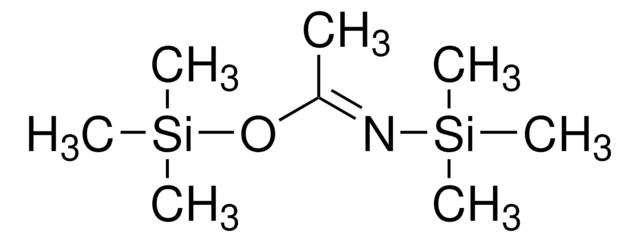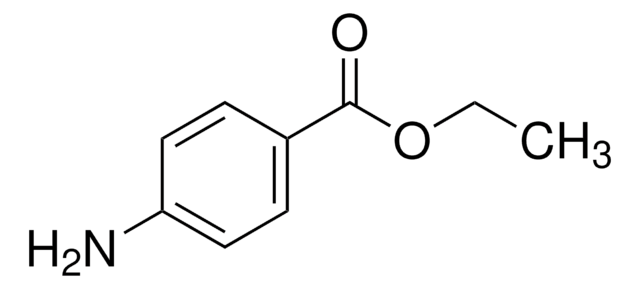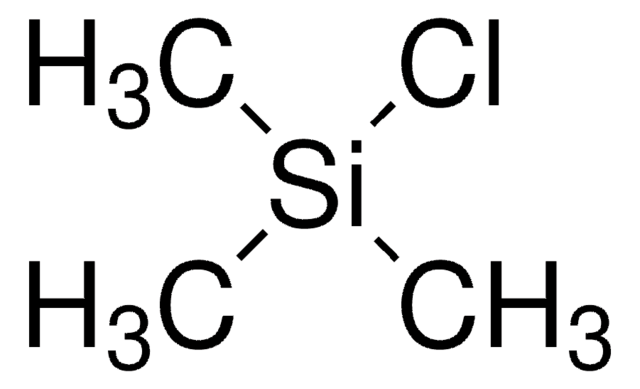15256
BSA+TMCS
for GC derivatization, LiChropur™, 93.0-97.0% (GC)
Sinônimo(s):
Bis(trimethylsilyl)acetamide + Trimethylchlorosilane
About This Item
Produtos recomendados
grau
for GC derivatization
Nível de qualidade
Ensaio
93.0-97.0% (GC)
qualidade
LiChropur™
composição
trimethylchlorosilane (minor component), 3.0-5.0% GC
adequação da reação
reagent type: derivatization reagent
reaction type: Silylations
técnica(s)
gas chromatography (GC): suitable
Descrição geral
Aplicação
Características e benefícios
- BSA+TMCS has good solvent properties and can function as a silylation reagent without additional solvents.
- Alternatively, the mixture is very soluble in most commonly used silylation solvents.
- This combination is extremely sensitive to moisture and should be handled under dry conditions.
Outras notas
Informações legais
produto relacionado
Palavra indicadora
Danger
Frases de perigo
Declarações de precaução
Classificações de perigo
Acute Tox. 4 Oral - Flam. Liq. 2 - Skin Corr. 1A
Perigos de suplementos
Código de classe de armazenamento
3 - Flammable liquids
Classe de risco de água (WGK)
WGK 3
Ponto de fulgor (°F)
53.6 °F - closed cup
Ponto de fulgor (°C)
12 °C - closed cup
Equipamento de proteção individual
Faceshields, Gloves, Goggles, type ABEK (EN14387) respirator filter
Escolha uma das versões mais recentes:
Certificados de análise (COA)
Não está vendo a versão correta?
Se precisar de uma versão específica, você pode procurar um certificado específico pelo número do lote ou da remessa.
Já possui este produto?
Encontre a documentação dos produtos que você adquiriu recentemente na biblioteca de documentos.
Artigos
Results of a study involving the ability few Fluka silylating reagents to form GC-MS-compatible trimethylsilylmethyl derivatives of NSAIDs
Nossa equipe de cientistas tem experiência em todas as áreas de pesquisa, incluindo Life Sciences, ciência de materiais, síntese química, cromatografia, química analítica e muitas outras.
Entre em contato com a assistência técnica








